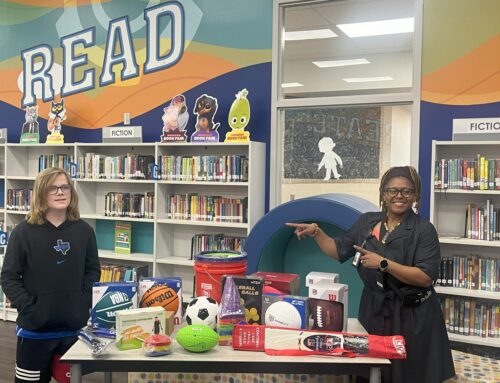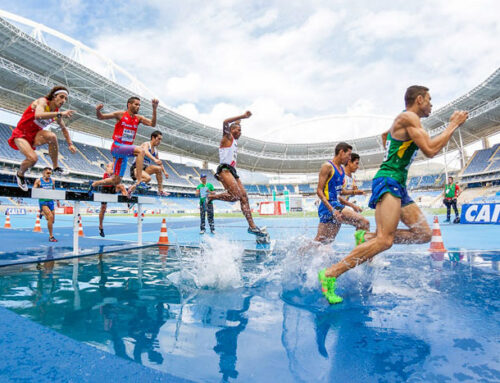Being a Dallas roller derby girl is a bit of a dichotomy.
For starters, there’s the uniform – a helmet, mouth guard and kneepads ironically coupled with a mini skirt or hot pants and, in some cases, fishnets.
“People ask me, ‘What do you do? Girls in skirts on skates? What?’” says Anne Daugherty, known in the Dallas derby world as June Carter Crash.
Then there’s the on-the-rink vs. off-the-rink mentality. The 110 women in the league practice together weekly and profess to be a sisterhood, or at least an anti-sorority. But when it comes time for a “bout,” or derby competition, anyone wearing a different uniform is fair game. And, yes, the fights are real, although, says Shalon Reaux – a.k.a. Malicyn Wonderland – relatively infrequent and not at all serious.
“A few little fights will break out, but it’s all good in the end. And, of course, the crowd loves it.”
And there’s the dual personality aspect. These women are homemakers, teachers, artists, lawyers and business owners, but when they step into their skates, each takes on a tough chick alter-ego bolstered by a name such as “Razen Cane” or “Ultra Violence.”
“None of these girls, when you meet them, come across that way, but get’em on the rink, and it’s a different story,” Daugherty says. “Each girl has another persona that they can live out through their character.”
It’s an empowering schizophrenia, giving them the freedom to unleash pent up energy, creativity, even confidence, and it all converges on the rink, making the bouts an absolute blast to watch.
The Dallas Derby Devils formed in late 2004, inspired by an exhibition bout that came through town featuring the Texas Rollergirls from Austin. The brassier reincarnation of the ’70s roller derby craze appealed to a number of 20- and 30-something women, including some in our neighborhood.
“I saw an episode of ‘Insomniac with Dave Attell,’” Reaux says. “He was in Austin and went to one of the Texas Rollergirls’ games. I thought, ‘Uh huh, that looks interesting.’ So I looked on the Internet and found the Dallas Derby Devils and thought, ‘That’s it! I gotta do it.’”
Some recruits, such as Angela Brandes, who’s Jersey Runaway when on her wheels, grew up on the skating rink. That’s where she and her friends spent their weekends, celebrating birthday parties and formed their identities.
“The happiest times of my life are when I have roller skates on,” Brandes says.
For others, the attraction lay in the league’s opportunities for athleticism.
Take Kasey Jones (General Disaster on skates), who at 39 says her roller skates “are older than some of the girls in the league.” Before injuries forced her doctor to ban her from sports, she played soccer at the college level, and was in the first women’s cup in China in 1984 as an LHHS senior.
And she admits her doctor isn’t aware she’s in the league.
But the lure of roller derby was too great, says the mother of two.
“I’m going to be 40 soon, and I’m a great skater. Yeah, you get knocked around, but you’re stamina gets better as you play and practice,” says Jones, who will have her knee scoped between bouts in June, yet hopes to play in both. “You have to learn how to take a hit and be hit. You can’t be afraid to get knocked down.”
But not every Dallas Derby Devil is like Jones. Reaux, for example, admits this is her first organized sport “besides playing T-ball at 5…and I was always the kid that would hang on to wall [at the skating rink] because I was too afraid to get into the middle,” she says.
But, she says, she’s an aggressive person.
“I guess it was the violence that drew me in – being violent and getting away with it,” she laughs. “When I’m in my car, I like to yell at everybody. I wish they could hear me, but they can’t. So during the games, I’m like ‘grrrrr!’ I use it where it’s needed.”
And, though Reaux says “it actually helps to have a few extra pounds,” size doesn’t play all that big a part in the bouts. Skinny girls usually have the advantage when it comes to lapping opponents and scoring points, but a little more meat helps when you need to thrust a hip or shoulder to take someone down. Or when the refs penalize you for fighting, which requires you to pull on oversized boxing gloves and go after the girl who has it in for you – while still wearing skates. (Whoever’s left standing, wins.)
And, of course, a little gumption doesn’t hurt. It takes a certain penchant for partying, and the women readily admit they love the superstar aspect of fans chanting their names and asking for autographs.
But the derby requires more than a flair for the theatrical. It also takes serious commitment – three practices a week and at least two promotional events a month, plus the bouts and any other individual prep. The women who survive the grueling schedule suddenly find that their best friends are the people skating alongside them.
“You’ve got a whole bunch of girls you never would have met,” Jones says, “and you have all this stuff in common.”
The camaraderie in the “sorority of the bruised girls,” as Brandes calls it, has helped some league members through hard times.
Brandes depended on the distraction of roller derby as she struggled through a divorce. It’s a place where people often find the nourishment to blossom, she says.
“There’s this moment when you stop being afraid to get hit, and you stop being afraid to fall down, and in that moment you can’t believe the confidence that comes through for you,” Brandes says.
Her moment came when a 6-foot-tall “thick girl” checked her during a practice. She didn’t see her coming, and her petite 5-foot-1 frame went flying across the rink, landing on her hip.
As hard as they train – learning how to skate, how to maneuver, even how to properly fall – injuries are inevitable. Skid burns and rainbow-colored bruises are the most common battle scars, but there’s the occasional shoulder dislocation or torn knee ligament. One girl, Reaux says, even found out she’d been playing with a broken arm.
Roller derby is often compared to professional wrestling, a correlation the participants detest because it suggests the sport is a charade. It’s more like rugby, they argue, but with skates and without a ball. Sure, there are tawdry uniforms and garish make-up, but “we’re athletes first, goofy girls second,” Reaux says.
And all that spectacle? Well, that’s mostly a marketing mechanism – and one that clearly works.
“We’ve been selling out,” Jones says. “Our capacity is around 1,000, and they’ve turned like 200 people away. It’s packed, and people love it. They’ll stack up beer and Coke cans and make big signs that say, ‘Crash Here!’ The crowd is what makes it.”
Reaux, however, is quick to point out that the bouts – and particularly the after-parties – are not for everyone.
“It gets wild,” she says. “I’d say our games are pretty much PG-13. There are some kids at the games, but it’s definitely a parent’s call.”





